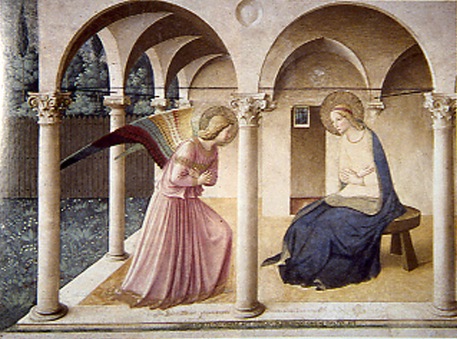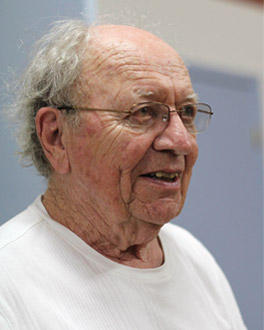
The Annunciation by Fra Angelico (1395-1455 AD)
Fresco painting at the top of the stairs in the Monastery of San Marco in Florence Italy (1437-46)
- The richly colored flat pattern design that holds the image in the eye as physical pleasure. While the style was the foundation of the medieval Italian manner of iconic religious imagery, it was recovered in a new context by the modern 19th century movement by artists like Matisse, Lautrec and Picasso.
- The mastery of the new visual insights of the Italian Renaissance of the fifteenth century, with its integration of space and form, based upon the new foundations of geometric perspective. The combination of an architectural setting with landscape in the background, and fully formed human figures occupying the space gave birth to much more than new picture-making. It added a narrative element that led eventually to the modern stage and later, film.
- There is also the new presence of the personality of the single artist, the individual as a creative unit, as inspired by the humanistic forces of new learning, especially in Fra Angelico’s Florence. While Fra Angelico was a devout monk, rooted in his service to the Church, he also had a very modern understanding of the humanistic thinking of his time. In that sense he was a unique bridge that delicately balanced both old and new.
To our eyes the old medieval conventions in Fra Angelico’s hands are the most modern part of this painting. The abstract patterns and colors of the whole layout is a symphony of poetic order and designers precision. Following close behind are the architectonic units with which he creates all kinds of interactions between ‘figure-ground’, inside/outside, windows within windows, little pictures within the big pictures (the angel in its arch, the virgin in hers, or the doorway w/ window beyond, e.g.)
Then he shows his new mastery of precise perspective, almost like a theatre prop were it not for the modern ‘rod’ that tells us this us how old arches were held together when their masonry began to crumble.



